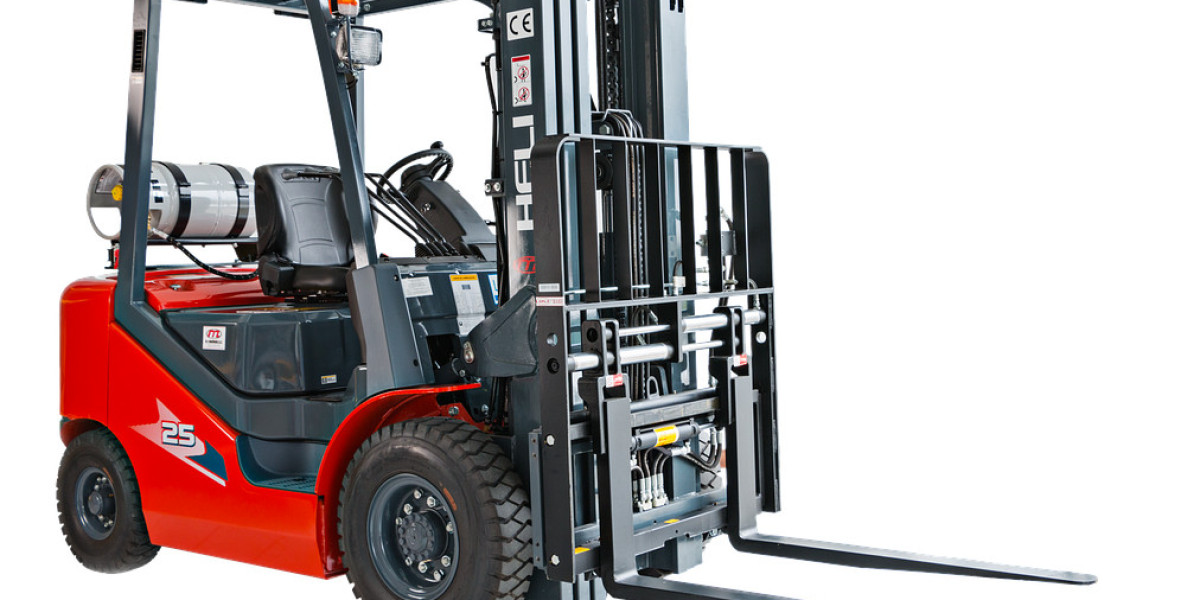Forklift trucks, often referred to simply as forklifts, are indispensable vehicles in warehouses, distribution centers, manufacturing facilities, and various other industries where efficient material handling is crucial. Forklift trucks play a pivotal role in lifting, moving, and stacking materials, significantly enhancing productivity and operational efficiency.
Evolution of Forklift Trucks
Since their inception in the early 20th century, forklift trucks have undergone significant technological advancements. Originally powered by combustion engines, modern forklifts now include electric variants that offer quieter operation, reduced emissions, and lower maintenance costs. These innovations have made forklift trucks more versatile and environmentally friendly.
Types of Forklift Trucks
Counterbalance Forklifts
The most common type of forklift, counterbalance forklifts, feature a weight at the rear to offset the load's weight at the front. They are ideal for lifting and transporting heavy loads in indoor settings, where maneuverability and balance are critical.
Reach Trucks
Reach trucks are designed for narrow aisle operations, utilizing telescopic forks that extend to reach and lift loads to great heights. They are widely used in high-density warehousing to maximize vertical storage space efficiently.
Pallet Jacks
Also known as pallet trucks or pump trucks, pallet jacks are manual or electric-powered vehicles used for lifting and moving pallets within confined spaces. They are essential for loading and unloading trucks and organizing goods in retail and logistics settings.
Order Pickers
Order pickers are specialized forklifts equipped with a platform for operators to stand on while picking individual items from high shelves. They are commonly used in distribution centers and large warehouses to fulfill customer orders quickly and accurately.
Key Components of Forklift Trucks
Mast
The mast is the vertical assembly on the forklift that raises and lowers the forks to lift and lower loads. It consists of interlocking rails and hydraulic cylinders that provide the lifting power needed for material handling tasks.
Forks
Forks, or tines, are the load-bearing arms of the forklift that slide under pallets or loads to lift and transport them. Forks vary in length and thickness depending on the type and size of the load they are designed to handle.
Hydraulics
Hydraulic systems power the lifting and tilting functions of forklifts. They control the movement of the mast, forks, and other attachments, ensuring smooth and precise operation during lifting, lowering, and tilting maneuvers.
Operational Considerations
Safety Features
Safety is paramount in forklift operations. Modern forklifts are equipped with features such as overhead guards, seat belts, and audible alarms to alert pedestrians and operators of their presence. Training programs ensure operators understand proper handling techniques and safety protocols.
Maintenance and Inspection
Regular maintenance and inspections are essential to keep forklift trucks in optimal condition. Scheduled servicing of engines, hydraulics, brakes, and tires not only prolongs the vehicle's lifespan but also reduces the risk of breakdowns and accidents.
Applications of Forklift Trucks
Warehousing and Distribution
Forklift trucks streamline operations in warehouses by efficiently moving goods between storage areas and loading docks. They contribute to inventory management, order fulfillment, and just-in-time delivery processes, optimizing supply chain efficiency.
Manufacturing
In manufacturing facilities, forklift trucks facilitate the movement of raw materials, components, and finished products across production lines. They support assembly processes, inventory storage, and logistics coordination, ensuring seamless operations.
Construction
On construction sites, forklift trucks handle heavy construction materials, equipment, and supplies. They assist in site preparation, material delivery, and lifting operations, enhancing construction productivity and project timelines.
Environmental Impact and Sustainability
Electric Forklifts
The shift towards electric forklifts reduces carbon emissions and noise pollution in indoor and urban environments. Battery-powered forklifts offer cleaner operation and lower operating costs over their lifespan, aligning with sustainability goals.
Future Trends in Forklift Technology
Automation and Robotics
Advancements in automation and robotics are transforming forklift operations. Automated guided vehicles (AGVs) and robotic forklifts navigate warehouses autonomously, improving efficiency, safety, and scalability in material handling tasks.
Telematics and Connectivity
Integration of telematics and IoT (Internet of Things) technologies enables real-time monitoring of forklift performance, productivity metrics, and maintenance needs. Data-driven insights optimize fleet management and operational workflows.
Conclusion
Forklift trucks are indispensable assets in modern industrial and commercial settings, revolutionizing material handling with their versatility, efficiency, and safety features. From counterbalance forklifts to specialized order pickers, each type serves unique operational needs, contributing to enhanced productivity and operational agility. As technology continues to evolve, the future of forklift trucks promises further advancements in automation, sustainability, and connectivity, driving innovation in logistics and supply chain management.



